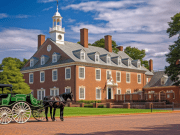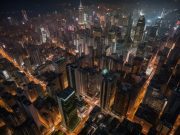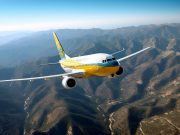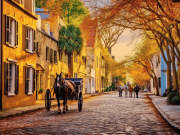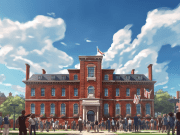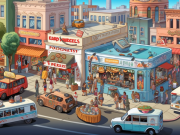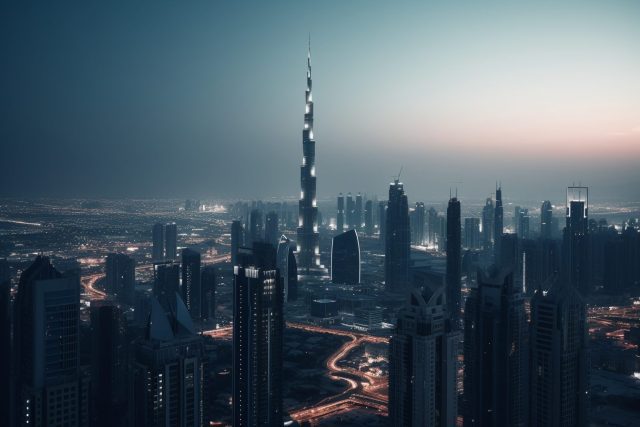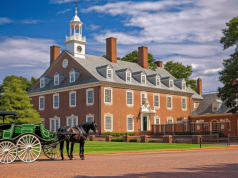As the largest continent in the world, it is no surprise that Asia has some of the most diverse and populous cities. But what is the largest city in this expansive region? From bustling Tokyo to ever-growing Delhi, there are several contenders for this title. As an Asia research specialist, I have studied these megacities extensively and am here to provide a comprehensive overview on which one reigns supreme.
In my exploration of Asian urban centers, I discovered that size isn’t everything. There’s more to being a successful metropolis than sheer population numbers—it also includes economic powerhouses and cultural hubs within its borders. With that in mind, I will reveal not only which city has the highest population count but also how its citizens make use of their city’s vast resources to create a thriving environment full of opportunity and freedom.
Overview Of Asia’s Megacities
Urbanization in Asia is a pervasive phenomenon, presenting both challenges and opportunities for an array of population dynamics. From the bustling streets of Beijing to the high-rises of Hong Kong, cities are continuing to expand and thrive throughout the continent. But which city stands as the largest metropolis? The answer lies in Tokyo, Japan – where more than 38 million people reside across its sprawling metropolitan area. With a booming economy and world-renowned cultural offerings, Tokyo has emerged as one of Asia’s most influential centers. It serves as a hub for business, entertainment, education, fashion – you name it! As such, this megacity presents myriad opportunities for citizens seeking new experiences and freedoms. This section will explore how Tokyo competes with other Asian urban areas on these fronts while highlighting unique features that make it stand out among its peers.
Tokyo, Japan
Tokyo is the largest city in Asia, and it has become a major economic hub with dense urban sprawl. It boasts an impressive cultural diversity that includes Japanese, Chinese, Korean, Indian as well as other ethnic groups.
The capital of Japan is known for its unique blend of historical sites and modern marvels. Spectacular temples like Senso-ji Temple or Meiji Shrine exist alongside towering skyscrapers such as Tokyo Skytree and Tokyo Tower. This mix of old and new creates a dynamic atmosphere unlike any other on the continent.
Moreover, Tokyo’s sheer size offers plenty to do in terms of entertainment, cuisine, nightlife and shopping. With its combination of traditional establishments and cutting-edge technology, there is something for everyone who visits this sprawling metropolis – from street vendors selling local delicacies to high-end boutiques offering goods from all over the world.
- Cultural Diversity:
- An array of ethnicities represented in Tokyo’s population including Japanese, Chinese, Korean & Indian people
- A special blend between ancient sites & modern structures create an energetic atmosphere
- Culinary options ranging from street food to first class restaurants provide opportunities for exploration into different cultures
- Urban Sprawl:
- Home to renowned landmarks like the Tokyo Skytree & Tokyo Tower
- Vast size provides endless possibilities for entertainment; movie theaters, museums & theme parks abound
- Shopping options span from small mom-and-pop stores to luxury fashion brands bringing global influence to the cityscape
From its diverse collection of peoples to its bustling streets full of life, Tokyo stands out as one of Asia’s most fascinating cities. Ready to move onto another Asian powerhouse? Let us explore Delhi in India next!
Delhi, India
In a region where its cities have been the cradle of civilization, one stands out as an exemplar in terms of population growth and urbanization trends. Delhi, India is Asia’s largest city with a population of over 20 million people – far surpassing any other metropolitan areas in the continent. It has become a symbol of progress and economic might, but also carries a unique burden that few cities can manage.
Delhi’s increasing prominence on the world stage has come at great cost to its citizens. The infrastructure needed to maintain such a large population has put immense strain on resources like water, electricity and transportation networks; all while air pollution levels consistently remain dangerously high due to unchecked industrial development. There are creative solutions being implemented by local governments and private sector companies alike to alleviate some of these issues, but they often don’t go far enough or fast enough for those who live there day-to-day.
The true power of this megacity lies not only in its size but also in its potential for innovation if given the proper tools and freedom from oppressive policies. Allowing more room for creativity could unlock access to cutting-edge technology and open up pathways for positive change that benefit everyone living within it’s boundaries. With each step forward taken towards improving quality of life conditions, Delhi will continue to be a beacon for what success looks like here in Asia. These same strides may even help Shanghai, China carve out their own place among the ranks of prosperous cities across the globe.
Shanghai, China
Shanghai, a city in China, is known as the largest city in Asia. With an estimated population of 24 million people, it has become one of the most important and influential cities on the continent. As Shanghai continues to grow at a rapid rate, urbanization issues have been brought to light due to its incredible economic growth.
The significance of being the largest city in Asia lies not only in its size but also in its role as a hub for international commerce and culture. Over time, Shanghai has developed into a financial center that rivals London or New York City. Its strategic location makes it ideal for global business operations and trade activities. The presence of numerous multinational corporations adds to this booming economy by bringing new jobs and investments into the region.
At the same time, Shanghai’s status as a major metropolitan area has led to concerns about overcrowding and environmental degradation caused by unchecked urban development projects. Despite these issues, many recognize that without strong economic growth there would be no hope for improvement in quality of life for those living in this bustling metropolis. Consequently, policies are needed that promote sustainable development while protecting the environment from further damage.
The Significance Of Being The Largest City In Asia
The largest city in Asia is a behemoth of endless possibility and potential. It holds within its borders an almost inconceivable amount of cultural diversity and economic opportunity, making it the envy of much of the world. To understand the significance that comes with being the biggest metropolis in Asia, one must consider what makes this majestic place so unique.
| Characteristics | Description |
|---|---|
| Cultural Diversity | Vastly varied cultures coexisting peacefully |
| Economic Impact | Booming business sector and ample job opportunities |
| Size | Record-breaking population size |
| Influence | Powerful voice on global stage |
In terms of cultural diversity, no other Asian city could compare to the sheer number and variety of people living harmoniously side by side here. As for economics, businesses both large and small have come to recognize its vast potential as an ideal location for investments; those who are looking for jobs can easily find them too. But none of these aspects would matter without its sheer size – a record-breaking population that gives it influence beyond expectations.
This iconic urban center has become synonymous with freedom itself; from limitless possibilities to boundless dreams coming true, it stands as proof that anything is achievable if you put your mind to it. Through all forms of adversity, this great symbol continues to shine brightly – a reminder that we should never give up hope or stop striving towards our goals despite any odds against us.
Frequently Asked Questions
What Is The Population Of The Largest City In Asia?
The largest city in Asia is Tokyo, Japan. With a population of 37 million people and counting, it’s no wonder that air quality and traffic congestion are pressing issues for its inhabitants. As one of the world’s most populous cities, Tokyo’s citizens face an ongoing struggle to maintain their freedom as they grapple with these two problems. Despite active efforts by government authorities to reduce pollution levels and alleviate traffic jams, the sheer number of people living in Tokyo means that progress can be slow going. However, it is clear that this great Asian metropolis will continue to evolve over time into an increasingly livable urban center.
What Are The Most Popular Attractions In The Largest City In Asia?
The largest city in Asia, and one of the most populous cities in the world, is home to many popular attractions. From bustling urbanization to air quality issues and more, there’s something for everyone. The Imperial Palace, located in Tokyo, Japan not only offers an impressive display of ancient architecture but also serves as a reminder of its rich history. For those looking for a unique experience, the Tsukiji Fish Market provides a lively atmosphere with fresh seafood from around the region. Additionally, modern attractions like the renowned Skytree Tower offer panoramic views of this metropolis. With numerous sites to explore and activities to enjoy, it’s no surprise that visitors flock here year round for its exceptional offerings.
What Is The Cost Of Living In The Largest City In Asia?
The cost of living in Asia’s largest city can vary greatly depending on the transportation options taken and activities planned. For example, traveling costs will be much higher if there are lots of short trips or multiple destinations to explore compared with taking one long journey across the city. When deciding what kind of transportation to take, it is important to factor in budget constraints as well as safety concerns since some methods may be more expensive than others but also provide a sense of security for travelers. Additionally, street food usually offers an inexpensive option for meals during sightseeing tours while local restaurants often provide delicious yet pricey alternatives. With careful planning, anyone looking to experience Asia’s largest city can enjoy an affordable trip that fits their needs!
What Is The Climate Like In The Largest City In Asia?
From bustling shopping districts to its rich cultural heritage, the largest city in Asia has something for everyone. With its hot and humid subtropical climate, one can expect temperatures that are rarely below 10°C during the winter months – making it a paradise for those with an insatiable thirst for freedom. Although summers can be oppressively hot, there’s no better way to experience this vibrant metropolis than on balmy spring days when locals take full advantage of all the city has to offer.
What Are The Cultural Differences Between The Largest City In Asia And Other Cities In Asia?
Asia is a continent rich with cultural diversity and heritage, making it an ideal destination for those who seek to experience something new. The largest city in Asia, however, has its own distinct culture that can be quite different from other cities across the region. This difference can manifest itself through language barriers, local customs and traditions, and cultural impact on everyday life. Language barriers are especially common when visiting large Asian cities as each location speaks their own dialect or language, often leading to confusion among travelers unfamiliar with the local tongue. Additionally, local customs and traditions can present differences between these major cities of Asia compared to others throughout the continent; this includes dietary preferences, religious beliefs, dress codes, and more. Finally, there is also a unique cultural impact at work within larger Asian cities which can shape how people behave and interact with one another on a day-to-day basis.
Conclusion
At the conclusion of this essay, it should be clear that Tokyo is the largest city in Asia. With a population of more than 37 million people, it is by far one of the most populous cities in the world. Despite having a higher cost of living compared to other Asian cities, Tokyo offers its inhabitants an array of attractions and activities to enjoy. From historical sites such as Meiji Shrine to modern marvels like Robot Restaurant, there is something for everyone.
That being said, some may argue that there are cultural differences between Tokyo and other parts of Asia which could make adapting difficult. However with an open mind and willingness to learn about different cultures, these challenges can be overcome. I believe that Tokyo provides enough opportunity and entertainment for anyone who wishes to experience life in the largest city in Asia.

